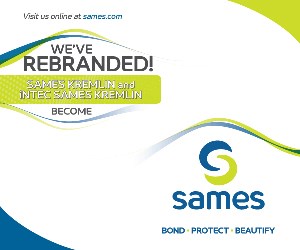Mass Finishing for Beginners
Question: What are some applications for mass finishing that I can relate to?
Question:
What are some applications for mass finishing that I can relate to?
Answer:
This question came from my hostess at a neighborhood dinner. She did not relate to the usual discussion of machined castings, die castings, powdered metal parts, stampings, extrusions and other items common to my world. She did understand how a fork or a spoon stamped out of flat metal might have sharp edges that would cut the user’s mouth if not smoothed (deburred) by some process. Some of us at the gathering began naming products that are mass finished, and it became an interesting exercise. We agreed to stay with products familiar to our hostess. I thought you would enjoy this, and I invite you to contribute to the discussion. Here goes: Already mentioned are forks and spoons. Of course, table knives and pocketknives get on that list. But, did you know that many fine restaurants have a vibratory finisher equipped for ball burnishing, and that they periodically process their flatware to get that nice shiny appearance?
Speaking of flatware (metals) leads to chinaware (ceramics). Cups, saucers, serving plates and related tableware items are vibratory finished to smooth the surface after being fired and before being glazed. This is usually performed with small ceramic triangles and water flow-through. Compound is not necessary. Some higher quality pottery items are similarly treated. Many wood products are vibratory finished. For example, garden tool handles and solid wood furniture trim pieces. This is usually done dry with a light plastic media or wood peg media. The finish can be as smooth as would be accomplished with fine sandpaper and an abundance of elbow grease.
Door knobs and lock hardware may be barrel or vibratory finished to get a shiny, smooth surface before plating. And, how about the drain basket in that kitchen sink?
Just mentioning the kitchen brought up many more items. Can openers—electric, manual and “church keys”—drawer pulls, cabinet door handles and hinges, drawer glides, garlic presses, measuring spoons, the rings in the loose-leaf cookbook, water faucets and spouts, burner handles, oven thermometer housing, light bulb bases, egg beater blades and food blender blades. The cookbook sat on a steel file cabinet with a variety of vibratory finished pieces including the nameplate holder, front panel, drawer glide, lock mechanism, and the key to lock it. A bulletin board displayed notes and recipes affixed with push pins and thumb tacks—mass finished, of course. We promised not to get into the innards of the refrigerator, freezer, microwave, garbage disposal, or trash compactor. She did, however, have a ball burnished decal on the refrigerator.
Opening a kitchen drawer we found a small screw driver, hammer, pliers, and assorted nails. All these were mass finished. Her German Shepherd walked in for a little attention and someone noted his nice chain—probably finished in a centrifugal barrel.
The dog’s jewelry led us to our hostess’s jewelry. The first subject was her wedding band. We talked of jewelry finishing and found several examples among her and the guests, not to overlook watch bands and bezels, key rings, fountain pen nibs, pocket clips and belt buckles. We were interrupted by a loud expletive when someone knocked an ashtray on the carpet. The ashtray was thermoset plastic that had been vibratory finished. An upright vacuum was brought out to rescue the carpet. We looked at the bottom plate, and it was one of those barrel burnished aluminum pieces. The electric plug had smoothed prongs. We refrained from discussing the motor parts, but did, however, find the cord-holding-hooks to be mass finished. The vacuum returned to its home where we found nicely burnished brass coat hooks.
A guest mentioned her hobby, sewing. She put on horn-rimmed eyeglasses to show us the fine work she did with her blouse buttons. The eyeglass frames were vibratory finished, the buttons were tumbled, the sewing machine needle was tumbled, and the sewing machine parts—well, you know.
Other hobbies came up. A pistol shooter reloads his ammunition and finishes the brass in a small vibrator; a rock hound polishes rocks in a tumbler; a motorcylist burnishes decorative parts; an antique clock rebuilder restores brass parts. The list goes on.
Mass finishing is a little known subject in a typical household, but it can be a lively topic at your next party. You will be surprised at the level of interest and participation. I invite you to share your experience with us.
Related Content
Having a Blast: Best Practices for Media Blasting
5 considerations for media blasting as surface preparation for coatings.
Read MoreEngineered Shaped Grain Abrasives Take Grinding Productivity to New Heights
Unique three-pointed curved grain approach offers advantages for tough grinding applications.
Read MoreBlast Nozzle Features Enhanced Noise Reduction
Kennametal adds noise-reducing Blast Ninja to portfolio of abrasive blast nozzles.
Read MoreHubbard-Hall Technical Team Adds Senior Chemist to Staff
David Keller is joining the Hubbard-Hall technical team as a senior chemist.
Read MoreRead Next
Masking Solutions for Medical Applications
According to Custom Fabricating and Supplies, a cleanroom is ideal for converting, die cutting, laminating, slitting, packaging and assembly of medical-grade products.
Read MoreA ‘Clean’ Agenda Offers Unique Presentations in Chicago
The 2024 Parts Cleaning Conference, co-located with the International Manufacturing Technology Show, includes presentations by several speakers who are new to the conference and topics that have not been covered in past editions of this event.
Read MoreEducation Bringing Cleaning to Machining
Debuting new speakers and cleaning technology content during this half-day workshop co-located with IMTS 2024.
Read More
















.jpg;maxWidth=300;quality=90)








